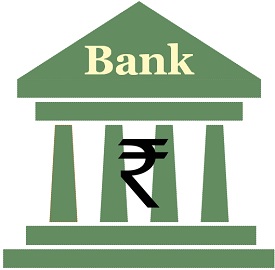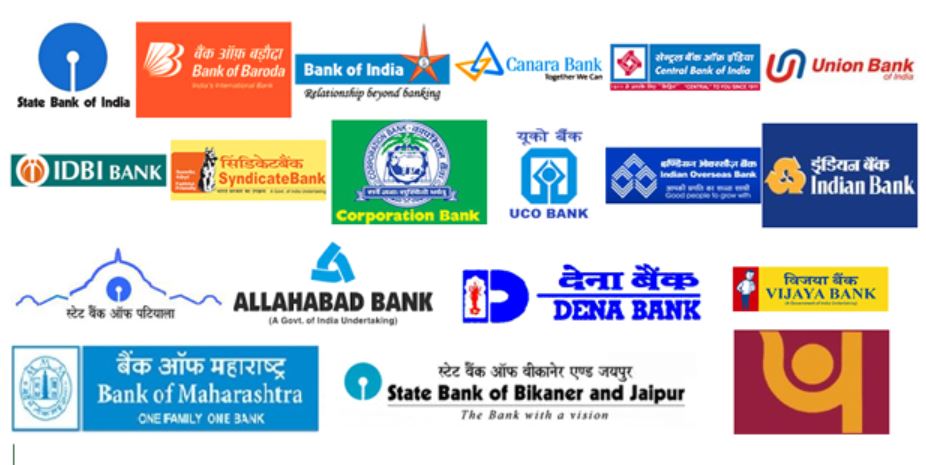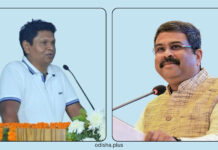By JRK
Are the Public Sector Banks malignant beyond redemption or maligned Ones?

Indian economy, post-independence, have three defining moments so far i.e., Bank nationalisation, liberalisation and demonetisation. The first was driven by both political and economic compulsion, second by purely economic compulsion driven out of the sovereign crisis of mortgaging gold to IMF by audacious Chandra Sekhar and third one to create a compulsion for self-inflation. 50 years of Bank nationalisation just passed by with muted celebration even the party of its architect failing to remind the powers that the germs of 5-trillion economy was sown in a distant past by the much-reviled iron lady. Only some trade union activists of Bank associations were seen tying ‘Rakhis’ to the customers celebrating the occasion.
Ironically, the tying of ‘Rakhis’ sums up the anomalies that afflicts the nationalised Banks today. Bankers are supposed to be courteous, affable but a typical aloofness must permeate their dealings which rules out the camaraderie or brotherly affection. Whatever may be the politics behind Bank nationalisation, it was nevertheless a welcome move, a bold decision at that point of time. Early sixties were turbulent times. Though Nehru was a Fabian Socialist by inclination, he had refrained from touching the powerful interest behind Banks. 665 Banks were liquidated during 1947-61, Palai Central Bank being the last one, within just a decade and a half time period. Though their deposit base was small, for some it was life-time savings which went up in smoke. The Banks were financing their owners for speculation and in case it failed, the buck stopped at the depositor and no insurance coverage was there, and 83% of the loans were taken by the owners. Interestingly, 13% of the loan components were personal loans which mostly went to money-lenders. There were 10.60 lacs loan accounts which were shrinking. The concept of social control of Banks was introduced but it was neither here nor there.
There were two wars, one defeat and another stalemate which had dried up the treasury without giving people a nationalistic jingoism which is associated with victory. The two consecutive droughts had resulted in food shortage. We virtually begged Uncle Sam who condescended to send wheat under PL-480. Roti rather than rice became a staple food. The commies cried hoarse over US giving Wheat which was meant to be thrown. But there have been no complaints of the donated wheat were being thrown, rather it was savoured by the hungry. Shastriji who took over tried to give a right tilt who was impressed with the East Asian countries surging ahead. He died early and, thank God, he was not in the saddle for long. The East Asian model of export-driven economy was not suited to this vast country and it would have been a catastrophe.

Contrary to widely-held belief, Indira was never handpicked as his successor by Nehru just like our own Naveenji. Both were selected by a powerful coterie (Syndicate) in the case of Indira, and Bijay Mohapatra led cabal who tried to call the shots by planting a weakling. But both broke free by their strong will power, discerning mind to engage Chanakyas and low threshold level ( I mean they would not have hesitated to walk into political sunset had they failed). Bank nationalisation offered Indiraji a right paradigm. Indiraji dithered first, took her time, finally brought out a draft Ordinance on Bank nationalisation made in1963 and chose 48 hours before resignation of V.V.Giri, acting President who went for re-election as her candidate for promulgation of Ordinance. 14 banks with deposit above 50 crores were nationalised on the early evening of July 19th 1969. Morarji Desai, the Finance Minister, quit in protest. When Indiraji was asked about that the Syndicate had powerful interest with them, she had retorted that the poor of India were with her. Poor were the outlier but it was a political masterstroke. To her credit, unlike tin pot dictators of Africa, she did not expropriate. As against paid-up capital and reserve of around Rs 700 crores, she compensated the owners with 8200 crores. Of course, the compensation is awarded factoring brand value. But those Banks never inspired confidence. The Central Bank of India was the largest Bank taken over with 10% of Bank deposit at that time. But the market Cap as on date is 7200 crores. That speaks of the maturity of Indiraji by keeping those promoters going full hog with Syndicate. She also refrained from taking over Grinlays Bank which would have international ramifications. The issue of nationalisation was fought by underlings of some promoters in Supreme Court but the adverse decision was overruled by an Act of Parliament with notable support from Vajpayeeji.

Certainly, Bank nationalisation had several positives. I would prioritise job creation. Over the years, lakhs of educated youth were absorbed as Probationary officers, Agriculture Officers, Specialists, clerks, cashiers and messengers. The overwhelming majority came from rural hinterland which was fortune-changer for some of the families. The pay was lucrative which helped them to educate the other siblings. Serving and retired Bankers are 1.2 out of each 1000 population. Odisha was a major beneficiary. Odisha University of Agriculture and Technology (OUAT) which was supposed to usher in Agriculture revolution in Odisha produced hundreds of Bank officers. So peeved was Biju Pattnaik with such change of career by the students, he had threatened to convert OUAT to a Ganji (vest) factory unless it focuses on the development of agriculture in Odisha. The social unrest was avoided as this offered opportunity for white-collar jobs. At least, the examination did give hope to every ordinary graduate and even, non-graduate and in case he failed to succeed, he blamed his luck rather than the Govt. Thereafter, with liberalization, IT sector took over as a mass employer. The boys and even the girls moved abroad which was a dream for their parents. The White sneered at them as body-shoppers as they did low-value jobs with a comparatively low pay which those Whites would demur. Frankly, the initial Bankers were also body-shoppers as the job was low-skill, repetitive and lacked any innovation. Of course, with globalization, Banking has become complex and in recent years, specialists are being given preference.
The Branch expansion has been another milestone. Maruti claimed in an advertisement that they have a Service Station even in desert. In reality, the nationalised Banks had a Branch everywhere even in hamlets. RBI had stipulated that 4 rural Branches have to be opened as against one Branch in urban centre, and as such, the reach of Banks became pervasive. Over 90000 bank branches have been functioning in the country now. The rule was abolished in late nineties but, by then, it was difficult to rationalise the branches given local political pressure. Modiji introduced Jan Dhan A/cs in 2014 and more than 4 crore A/cs have already been opened. But that was possible because Indiraji had already laid the infrastructure for such a gigantic task. At least, the cut money highly prevalent in cash payment in different Govt schemes have substantially been cut down through credit to the A/cs. Fake cooking gas subsidy came into halt with transfer of subsidy to the A/c. The Public Sector Banks became also safety-valve during Demonetisation. [To be continued…]
(JRK is a Kolkata based Economic Analyst)





















